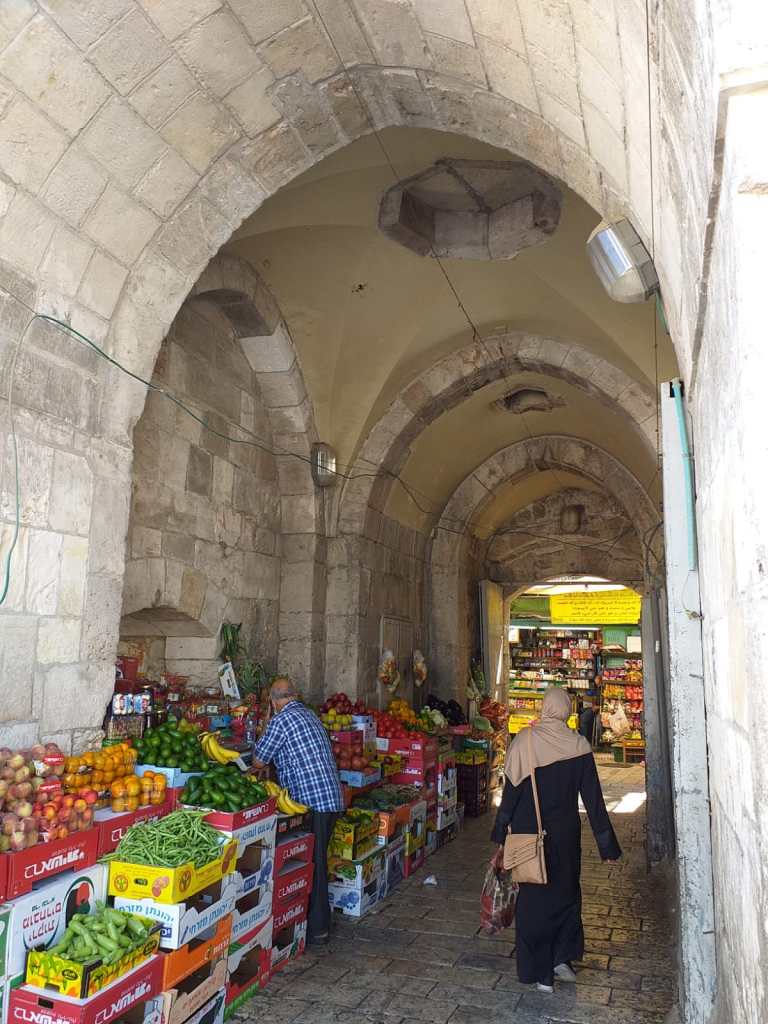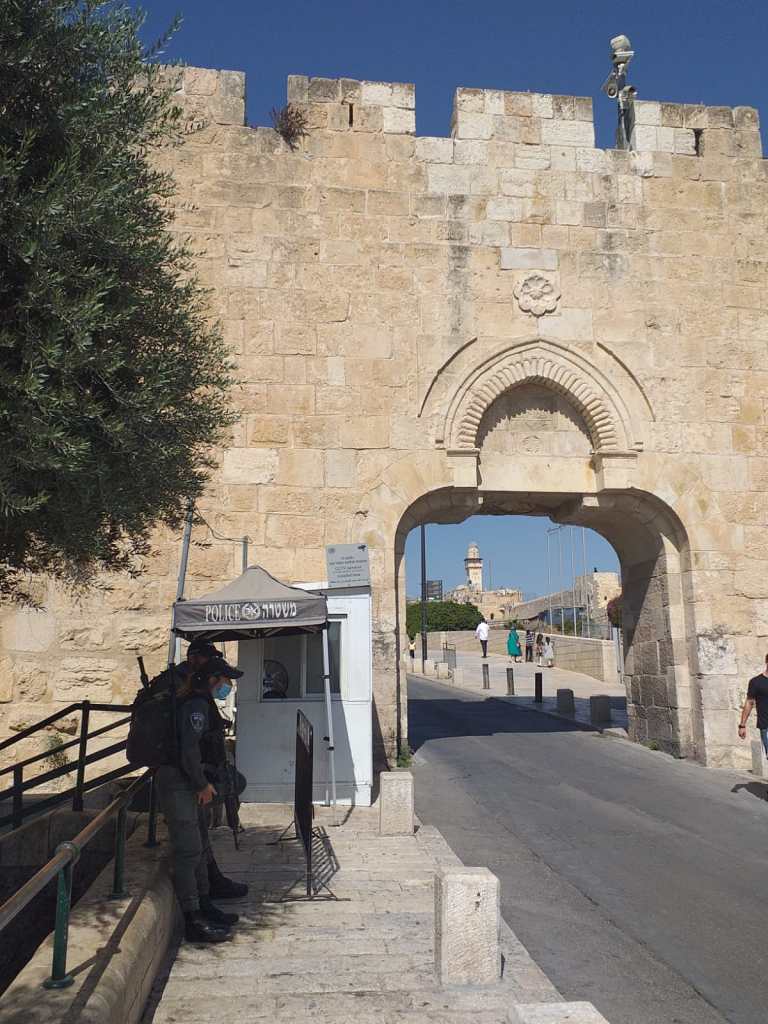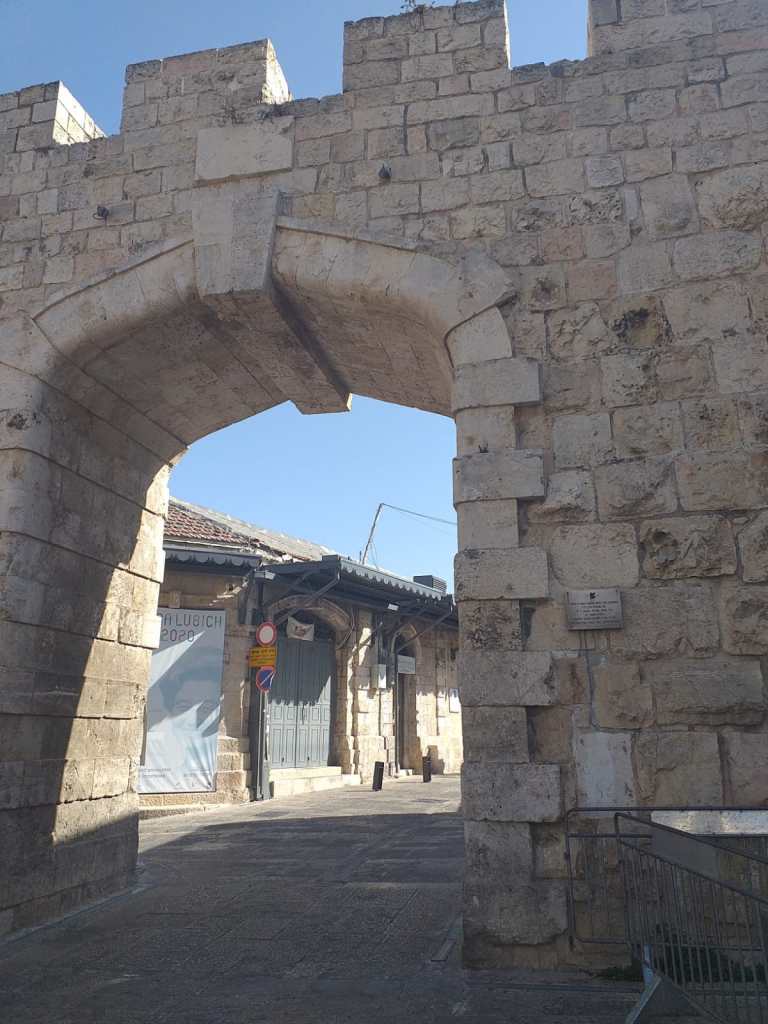If you are looking for famous gates (and I don’t mean Bill and Melinda here) you’d struggle to beat a stroll around Jerusalem’s Old City Gates. Just like a dysfunctional family, each one has its own personality and some fascinating historical tales to tell.
I was amazed to learn that the Old City Walls of Jerusalem only encompass an area of 1sq km. Each of the present seven main operational gates leads into such different realms, that it is as if space itself has been contorted to fit so much depth of atmosphere into this small geographic space.
There are eight main old City gates, seven of which are in use today and five of which were built by the Ottoman ruler Suleiman the Great between 1535-42. Suleiman was a bit of an achiever to say the least. As well as massively expanding the Ottoman Empire into the Middle East and North Africa he had an impressive list of building projects underway. In Jerusalem these included building the Old City Walls and restoring the Dome of the Rock all the while building Constantinople as a great capital city of the world.
Damascus Gate is perhaps the most imposing and impressive of the Old City gate family. It was grandly built in 1537 as both a strong fortification and also a symbol of power to welcome Suleiman and other notables on their arrival into Jerusalem from Damascus. It used to be possible to take a bus from here to Damascus (little more than 200km away) but you will send google into a head spin if you ask it to calculate the route these days.

Damascus Gate leads directly into the Muslim Quarter of the Old City and is an important symbol linking Palestinians to their historical roots and ongoing right to be present here. In normal times, it is a hive of activity and it is a must for any tourist to sit on the large stone steps in front of the gate and engage in some serious people watching.
There is always a heavy police presence in front of the gate, and it is sad to watch as Palestinians are hauled into the police booth for scrutiny and questioning as they try to go about their daily business.
Walking into Damascus Gate brings you into the beating heart of the Muslim Quarter. Some old women in traditional Palestinian gowns sit on the ground selling bunches of fresh herbs, or grapes or whatever is seasonal from their village. Meanwhile stallholders shout out the daily prices and the smell of fresh bread and spices fills the air.
Walking round the city walls in a clockwise direction, the next gate you will encounter is Herod’s Gate or Flower Gate as its Arabic and Hebrew name goes. It is thought that the flowers are a reference to the local cemetery nearby. This was a late addition to the gates family in 1875 and it was built to connect the Old City with the growing Muslim neighbourhoods outside the city walls.

Herods Gate has a similar feel to Damascus Gate in terms of the footfall from shoppers and stalls but the gate itself is of a far more modest construction. Entering the city through Herod’s Gate leads to a quieter more residential area of the Muslim Quarter.
Continuing the City Wall walk clockwise, the next gate you will come to is Lion’s Gate. This is a bit of a giant not only in name but in religious and historical significance. Legend has it that Suleiman’s predecessor dreamt he would be eaten by lions if he destroyed Jerusalem and so instead, he promised to build walls to protect it. Suleiman honoured this and had four lions carved into the gate when it was built in 1539. Although well-worn they are still visible today.


Lion’s Gate has immense significance for Christians as it sits on Jesus’ final journey from Mount of Olives into the Old City and along the Via Delarosa where he was led to his crucifixion. Normally pilgrims and tourists would be pouring into the city to retrace these steps but for now, there is a sleepy stillness about the area. Through the gate, a mosque sits on one side and several churches start to pepper the route.
As you continue to walk the city walls, the next few gates are part of the Jewish Quarter. Golden Gate deserves a mention despite having been sealed for centuries. This gate has special significance for all three main religions here. Christians believe Jesus entered Jerusalem through this gate when he visited for the last time. Muslims believe it is at this gate that people will be tested on judgement day and Jewish beliefs are that the Messiah will enter Jerusalem through this gate, and it will be miraculously unsealed.

The main gate leading into the Jewish Quarter is Dung Gate which comes next on the route and was one of Suleiman’s, built in 1540. The gate is close to the Western Wall and you will always see smartly dressed Jewish families streaming in through this gate on their way to pray. The gate itself is unremarkable apart from some inscriptions marked into the rock and a heavy police presence.
Zion’s Gate comes next and was named so by Suleiman in 1540 because it faces Mount Zion. This gate leads into the quiet Armenian Quarter. Despite great character, it is the least visited on the tourist trail. The gate is narrow and set at a 90 degree angle which requires even a modestly sized car to do a three point turn to get through it. I notice this car has a lot of scratches on the side and has probably been battling this gate for years. The outside wall is heavily pockmarked with bullet holes in the thick stone. This is a visual reminder of the Zion Gate’s role during the war in 1948 when Israel became independent.


Walking a few hundred metres round from Zion’s Gate, you can’t miss Jaffa Gate. It is a main artery into the Old City and is a stark contrast to its quieter neighbour. This gate was also built by Suleiman in 1540 and is named as the destination point for both Jewish and Christian travellers arriving at Jaffa port to visit Jerusalem. Its Arabic name is ‘Hebron gate’ as it also connected people travelling from that direction.
Even during 2020 it is hard to get a photo of Jaffa Gate without people coming and going. It is another must see on the tourist route leading to several key sites such as the David Citadel and the heart of the Christian Quarter. Next to the pedestrian gate, there is a gap in the City Walls where cars can drive through. This was created in 1898 to allow the visiting Kaiser Wilhelm II and his vehicles to drive directly into the Old City.


My gate tour ended unceremoniously at New Gate. Built in 1889 its name still holds. The gate itself is functional rather than decorative and leads directly into the Christian Quarter. There are many interesting alleyways and shops to explore here and it is always worth a wander.
I love that each gate is like going down a different rabbit hole into a different part of the city. For today, I am going to pick Zion’s Gate as my favourite for its quirkiness, visible struggles and low-key charm. Which gate do you love most and why?
Beautiful and interesting! As a Palestinian, they are all favorable for me. Because as you have mentioned, each one of these Gates has an amazing story and secrets to tell about the people who built them!
LikeLiked by 1 person
Another amazing and interesting blog Kirsty!
I have chosen Lions Gate as my favourite.
As a catholic, I am imagining Jesus last journey through the gate. I also love the beauty of seeing the mount of olives through it.
Suzanne.
LikeLiked by 1 person
Thanks Suzanne, it really is a good one Lion’s Gate. When we first arrived Andrew got up really early to do the walk from Lions Gate along the via Delarosa on Easter Sunday and that sounded very special. I made the mistake of thinking I would do it this year!
LikeLike